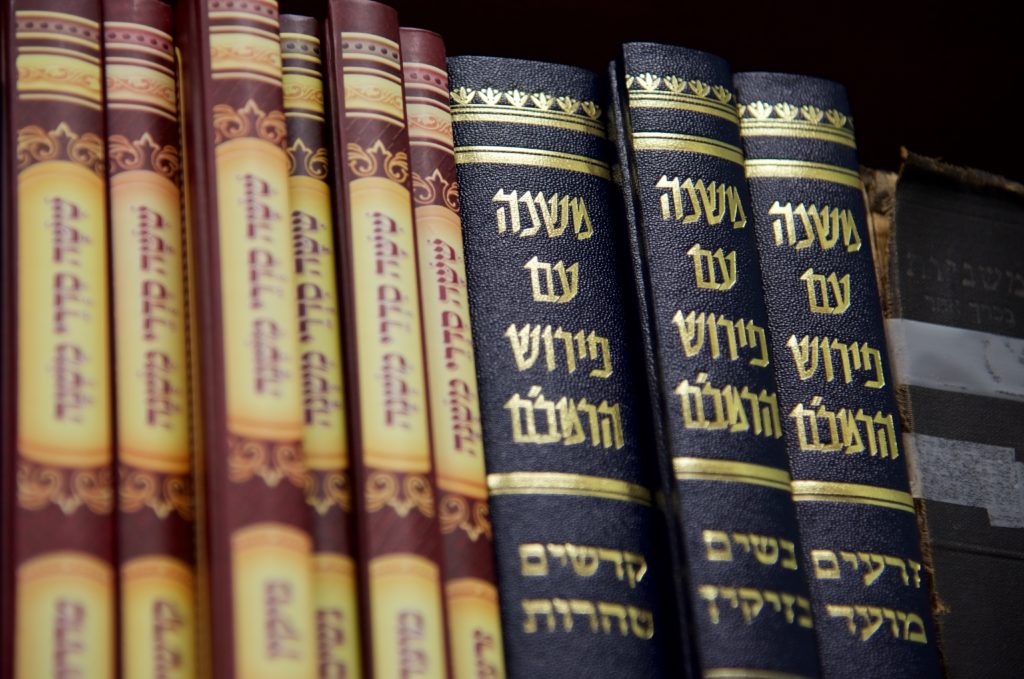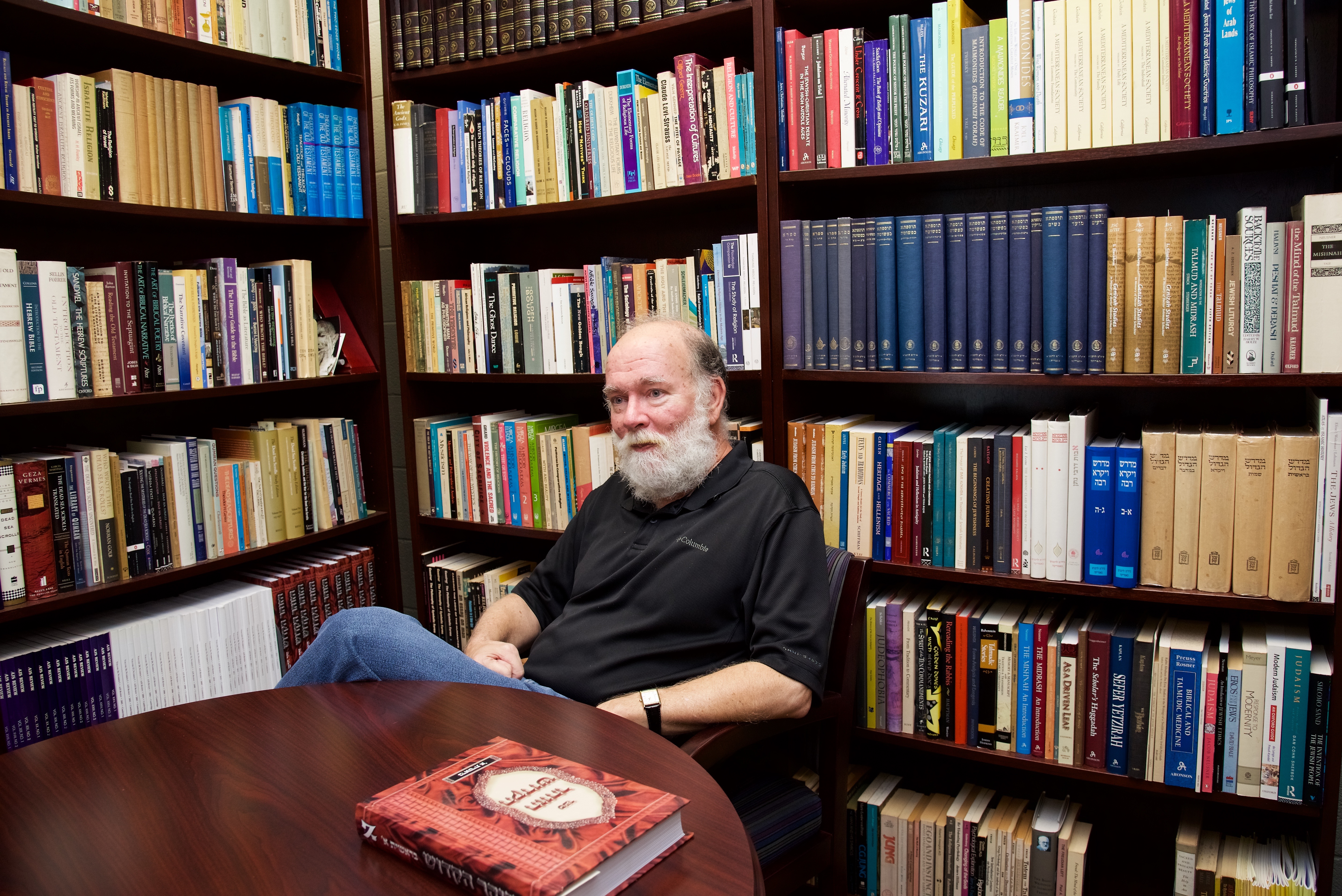The ancient texts that tell their secrets to UNC Charlotte researcher John C. Reeves inhabit the twilight realms of cosmic arcana, apocalyptic fervor, and religious dualism of Late Antiquity and the Medieval Era.
“It’s really the thrill of solving mysteries that keeps me going,” says Reeves, UNC Charlotte Blumenthal Professor of Judaic Studies and Professor of Religious Studies.
Reeves’ research agenda is broadly construed, focused on the study of the religions practiced in the Mediterranean world, the Near East, and Iran from roughly 600 BCE through the Middle Ages. Much of his work takes place at the margins of conventionally conceived categories, exploring the overlaps and commonalities discernible among a host of Near Eastern fringe groups.
“One of the main focuses that I’ve been doing over the course of my career is to try to cross boundaries into different religions and not leave them in hermetically sealed containers from one another,” Reeves says. “That is because they all interacted with each other in much more intimate ways than we are normally accustomed to thinking about.”
In 2015-16, Reeves received a prestigious American Council of Learned Societies Fellowship for a project concentrating upon the history of the transmission of ancient Jewish literary texts and non-canonical lore among a variety of Near Eastern religious communities and movements during late antiquity and the early medieval period.
 In a recent paper that is in press, “Moses at the Margins of Space and Time,” Reeves considers figures such as Moses and aspects of his death, along with Jewish, Christian, and Muslim scriptures and legends, to show how they have interacted with one another in their respective realms of beliefs.
In a recent paper that is in press, “Moses at the Margins of Space and Time,” Reeves considers figures such as Moses and aspects of his death, along with Jewish, Christian, and Muslim scriptures and legends, to show how they have interacted with one another in their respective realms of beliefs.
“One of the things I’ve been fascinated with is the literary development of religious characters, like a Moses or a David or an Adam and Eve, and how they look, are interpreted, and have developed in these different traditions,” Reeves says. “Sometimes there is a version of a biblical story like we have in the book of Genesis that carries almost the opposite message from how the Jewish Bible or the Christian Bible or the Quran tells the story.”
Reeves now is pursuing three separate monograph projects. The first is a new annotated translation of the Syriac Cave of Treasures, along with closely affiliated literature in Syriac, Arabic, and Ethiopic. Reeves contends that the Cave of Treasures is more influential than the Bible in terms of understanding how what ancient history was presented in the Eastern Christian and Islamic worlds.
“The impact that the Cave of Treasures has had is far-reaching,” Reeves says. “Though produced in Syriac, it’s been picked up by various groups, including Muslim and Christian writers in Arabic, as well as the Armenians and Georgians, the Coptic church in Egypt, and the Ethiopic orthodox church in Ethiopia. A lot of this information has never been translated into English, and I decided that it needed to happen.”
The second project is a synthetic study entitled “Shades of Light and Darkness: Chaldean Dualism, Gnosis, and the Islamicate Milieu.” More of a continuation of the kind of work he has been doing over the course of his career, this study focuses on how “gnostic” forms of religiosity in the East have influenced certain currents in Judaism, Christianity and Islamic sources.
The third project is a compilation and analysis he is completing with Annette Yoshiko Reed of the University of Pennsylvania on a massive library of literature associated with the biblical character Enoch which he has gleaned from Greek, Latin, Hebrew, Aramaic, Syriac, and Arabic language sources.
“The Enoch project is one that I’ve been working on for the last 25 years,” Reeves says. “It consists of a collection of literature that’s either attributed to Enoch, or in some cases, just literature about Enoch that I’ve extracted from Jewish, Christian, Muslim, and gnostic sources from the Dead Sea Scrolls up to about the time of Christopher Columbus.”
Reeves emphasizes the importance of exploring the connections between different religions in the past, and the implications for today.
“With Enoch especially, a lot of the literature is along the lines of astronomical, astrological, and medical content that stands at the threshold of the beginning of scientific investigation in the West,” Reeves says. “So to be able to trace how Enochic literature has passed between religious traditions or between thinkers across these religious divides is not only significant to our history, but it shows us that there is no reason the interactions between religions shouldn’t continue in today’s world.”
Words: Tyler Harris | Image: Lynn Roberson








